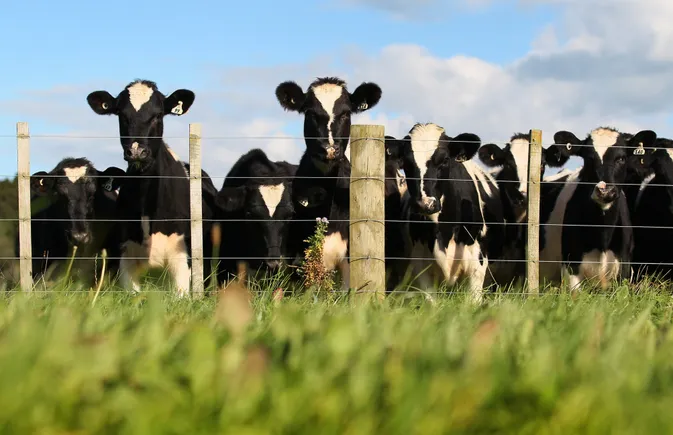Inside the dairies with bird flu: What farms’ experiences say about the need for biosecurity

Dive Brief:
-
A majority of dairy farms with positive bird flu cases moved sick animals off their farms despite cattle showing clinical symptoms, according to a report from the U.S. Department of Agriculture, underscoring the need for enhanced on-farm biosecurity measures to prevent the spread of the virus.
-
An epidemiological survey of affected farms found that more than 60% of respondents continued to transport animals even after they developed bird flu symptoms, according to the USDA’s Animal and Plant Health Inspection Service. More than 54% of all dairy farms with confirmed cases of bird flu on their property participated in the survey as of June 8.
-
A majority of farms reported sharing equipment with other farms, such as trucks and trailers to transport cattle, with many admitting they did not clean equipment in between. More than one-third of the dairies’ employees also work at another farm, according to the USDA report, increasing the risk for disease transmission.
Dive Insight:
The USDA survey is one of the first in-depth looks at how bird flu is moving through dairy farms across the country, with the department noting lapses in sanitation and biosecurity procedures that likely contributed to transmission.
Cattle transport, frequent farm visitors, plus shared equipment and labor appear to fuel transmission more so than the presence of wild birds, according to the survey. Although all farms noted the presence of some type of wild bird on their property, the USDA noted there is no “genomic or epidemiologic evidence” that these animals are spreading the virus.
The department also noted that other animals present on farms, like cats and poultry, may increase risk. Nearly all dairy farms that had poultry flocks noticed sick or dead birds. Of the farms with cats, more than 50% noticed animals die or become ill.
In Michigan, the state hardest hit by the ongoing dairy outbreak, epidemiologists found that most of the links between the dairies and poultry farms reporting cases are in the form of shared people, vehicles and equipment, according to a separate USDA report. While many of the biosecurity risks are unavoidable, they can be mitigated by increasing biosecurity practices and animal testing.
To advance research and help farms recover from the outbreak, Michigan’s agriculture department is offering up to $28,000 per farm to work with federal and state government agencies to investigate how the virus got onto their operations.
However, not all farms are taking the extra steps to monitor and prevent the disease from spreading. Despite federal funds being deployed, no farms have enrolled in voluntary on-site milk testing, Politico reported, with fewer than a dozen farms applying for financial aid in exchange for boosting biosecurity measures to contain the virus.
Katelyn Jetelina, a public health expert and CDC advisor, wrote in a newsletter Thursday that if the H5N1 virus becomes more common in cows, it could become a constant presence in the U.S. and fuel industry disruptions similar to what the poultry sector is experiencing.
“We aren’t doing the work to stop the virus,” she said.
More than 100 cases in dairy cattle have been confirmed in 12 states since late March, according to an online tracker as of June 18. Three U.S. farm workers have contracted and recovered from the virus over the past three months.
The spread in cattle continues to raise concerns that the virus could mutate and infect humans. Former CDC Director Robert Redfield said in an interview with NewsNation that it’s only a matter of time before bird flu transforms into a public health crisis with human-to-human transmission.
“I really do think it’s very likely that we will, at some time, it’s not a question of if, it’s more of a question of when we will have a bird flu pandemic,” he told the broadcast network.
Source: fooddive.com

